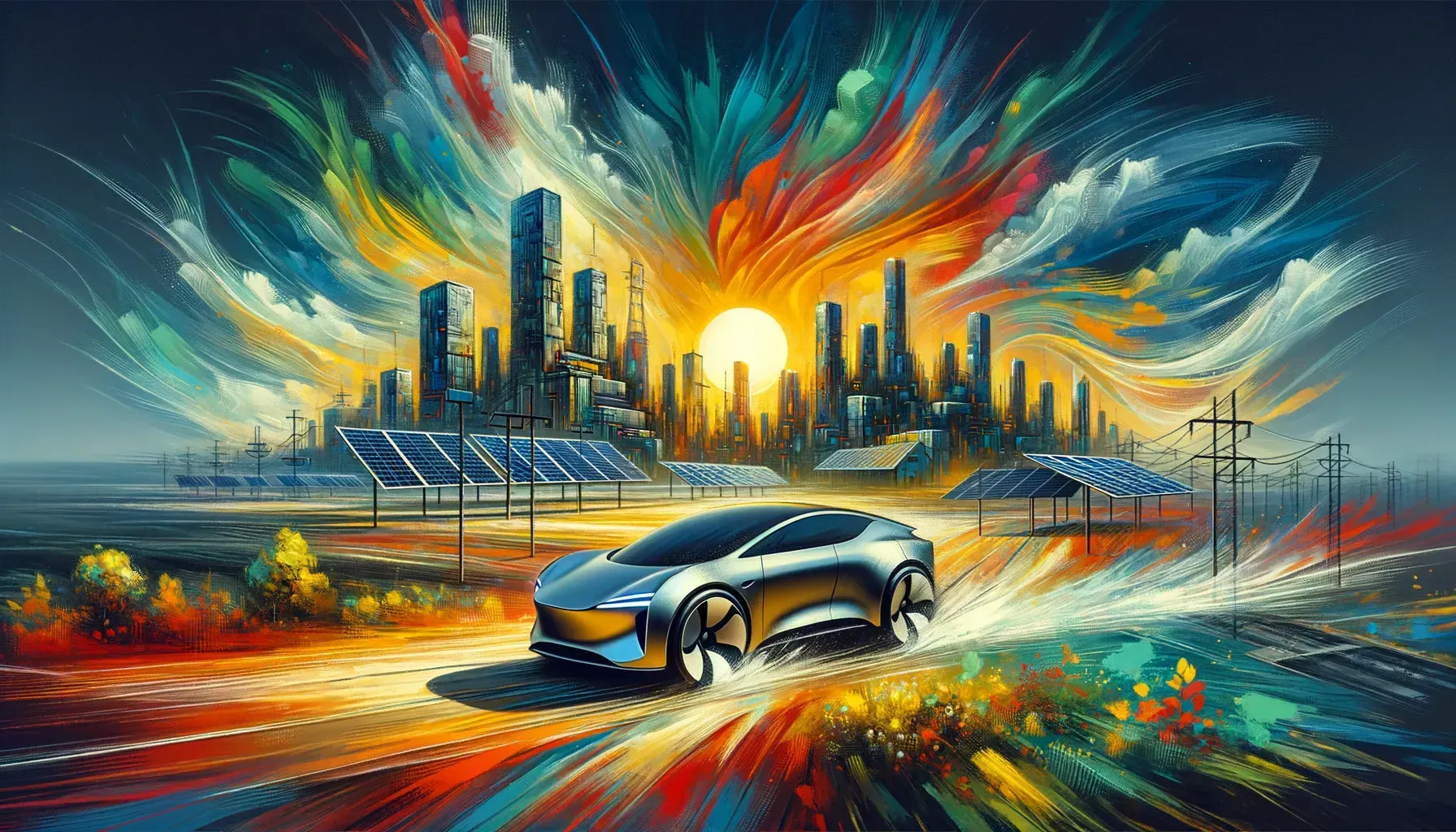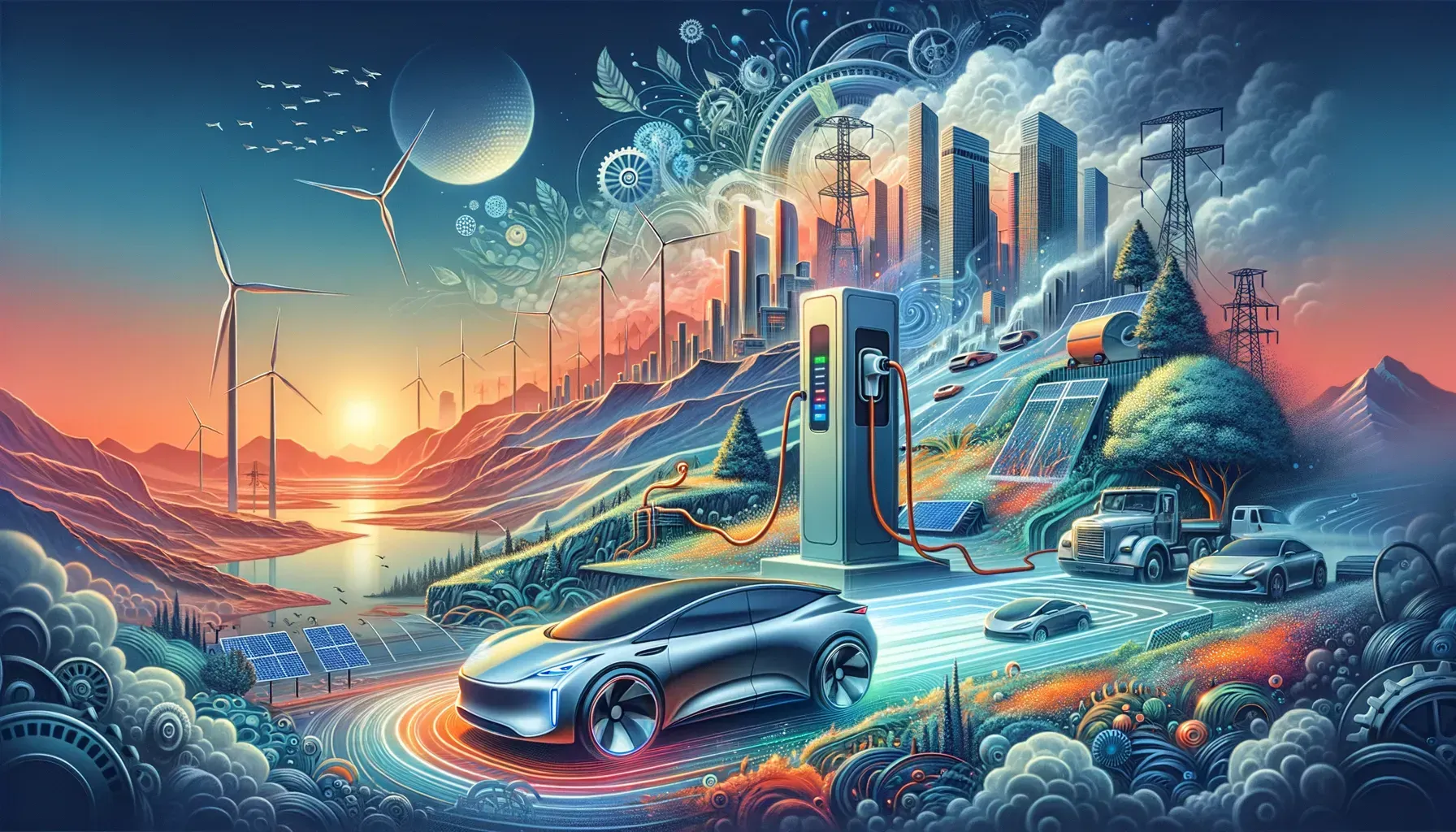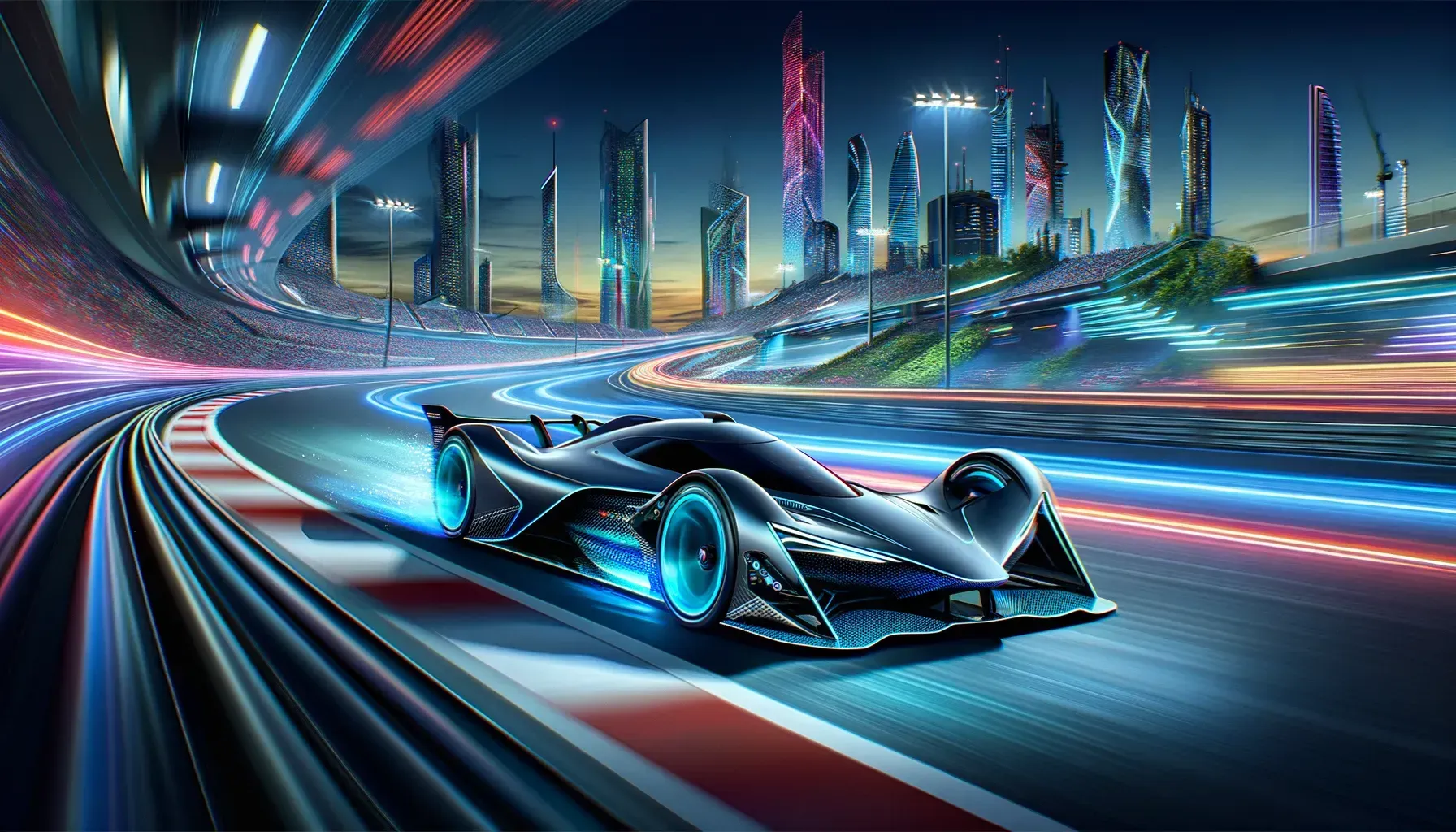Revving Up for the Future: What the Next-Gen Chevy Bolt EV Brings to the Table

Imagine cruising down the highway, the hum of an electric engine beneath you, and knowing you're part of a revolution in how we drive. The upcoming Chevy Bolt EV promises to enhance this experience with exciting updates and innovations that could change the game for electric vehicles. Let's dive into what makes this next-gen Bolt a vehicle to watch.
A Glimpse at the Next-Gen Chevy Bolt: What’s New?
General Motors recently shared exciting details about the upcoming next-generation Chevy Bolt. Mark Reuss, GM's President, spoke at an investor event. His remarks hinted at a bright future for the Bolt, especially as it transitions to the new Ultium platform. This shift is more than just a makeover—it's an evolution.
1. Faster Charging Capabilities
One of the most significant changes is the improvement in the Bolt's charging speed. The current Bolt operates at a charging rate between 50-55 kW . What does that mean? Well, it can add about 100 miles of range in just 30 minutes using a DC fast charger. However, that's considered below average for many electric vehicles on the market today.
With the next-gen model, GM is working to enhance this feature. Although exact figures weren't disclosed, the new Bolt is likely to boast much faster charging capabilities. Why is this so important? In the world of electric vehicles (EVs), charging speed remains a critical pain point for many consumers. Faster charging could ease buyer hesitations and make the Bolt a more attractive option.
2. A Family of Bolt-Branded Vehicles
Another exciting update from GM is the introduction of a family of Bolt-branded vehicles. Mark Reuss mentioned that the next-gen Bolt would not be a standalone model; it will belong to a larger family, including a potential lower-cost option. This expands the versatility of the Bolt lineup and targets a wider range of consumers. It opens the door for more choices—something every car shopper appreciates.
Imagine having different models tailored to various preferences and budgets, all under the Bolt name. It’s a strategic move in a competitive market. Can this new approach position Chevy as a strong contender? Time will tell, but it's certainly a step in the right direction.
3. Crafted for Performance and Value
The next-gen Bolt aims not just at being faster or more versatile, but also at delivering superior performance and value. Mark Reuss emphasized this commitment:
"The 2026 Bolt will offer the same value as the original Bolt and much more."
Why does this matter? Many consumers seek reliability, affordability, and a satisfying driving experience. If GM can deliver on these promises, they may set a new standard within the EV space. The projected starting price is estimated to be slightly above $28,795 , which continues the Bolt's legacy as an affordable electric vehicle.
What’s Next for Chevy Bolt?
As the hype builds around the next-gen Bolt, it’s essential to consider the implications of these changes. The transition to the Ultium platform signifies a shift towards innovation. Additionally, GM’s promise of multiple models could lead to greater market penetration. The Bolt may evolve beyond its initial offering, meeting the needs of modern drivers who demand more from their vehicles.
- Faster charging capabilities to meet modern consumer needs
- Introduction of a family of Bolt-branded vehicles
- Crafted for performance and value
As consumers continue to weigh their options, the next generation of the Chevy Bolt aims to provide a roadmap that blends performance with practicality. Mark Reuss stated,
"We do not need to create a skunkworks to create an affordable electric vehicle."It seems GM is ready to put their extensive history and knowledge to work in the evolving EV landscape.
The next-gen Bolt is set to officially debut as a model year 2026 vehicle next year. Excitement is building. Will it live up to expectations? That’s the million-dollar question.
Charging Into the Future: Enhancements and Expectations
As the electric vehicle (EV) market expands, the conversation inevitably turns to charging capabilities. With advancements happening at a rapid pace, it’s important to understand how these new features impact consumer choice and overall market growth. One standout example is the upcoming next-generation Chevy Bolt, which promises significant charging enhancements compared to its predecessors.
1. New Charging Capabilities as a Selling Point
Chevrolet's next-gen Bolt is set to revolutionize the charging experience for users. Fast charging is more than just a convenience; it’s a selling point. With the current Bolt offering a charging rate of 50–55 kW, it can gain about 100 miles of range in just 30 minutes at DC fast chargers. However, the next-gen Bolt will have an even faster charging rate. While specifics are yet to be revealed, faster capabilities will likely draw in more users who may have hesitated due to longer charge times.
- Efficiency: Faster charging means less time at the charging station.
- Convenience: Those who depend on their vehicles daily will appreciate quick top-ups.
- Appeal: Such advancements can attract first-time EV buyers who need reassurance.
2. Potential Impact on the Growing EV Market
With faster charging rates, manufacturers like GM can significantly impact the EV market. Consider this: what barriers do potential EV buyers face? One major hurdle is the current reliance on slower charging. This delay can discourage new EV conditions. Offering quicker charging configurations could also elevate consumer interest and thus hasten adoption rates.
What will this mean for the market? Here are some possibilities:
- Increased sales for manufacturers with faster charging technology.
- Boosted consumer confidence as overall charging speed becomes appealing.
- A potential shift in how people perceive electric vehicles; they may seem more practical.
If the next-gen Bolt indeed charges faster than its predecessors, it could help Chevrolet reclaim market share and instill competitive spirit among other automakers. After all, the ongoing battle among manufacturers isn't just about price; it’s about value.
3. Comparisons with Competitor Charging Technology
This discussion brings us to another pressing point: how does Chevrolet stack up against its competition? Rivals such as Ford and Tesla have made significant strides with their own charging technologies. For instance, Tesla’s Supercharger network is widely recognized for its efficiency. Fast-charging capabilities are a foundational selling feature for many brands, so how can Chevy compete?
GM has made it clear that they don't need a “skunkworks” project to innovate. As Mark Reuss, GM’s president, has noted, “We know how to do this.” The emphasis on developing more efficient charging systems shows that the company takes competition seriously, enhancing its product offerings without external consultations.
Real-World Implications of Charging Times
Understanding consumer perceptions of charging time is crucial. If someone switches to a faster charging solution, what do they feel? Are they significantly happier with their EV choice? The implications can be huge:
- Enhanced user satisfaction could lead to word-of-mouth marketing.
- Perceptions of EV technology could shift as consumers find charging less of an inconvenience.
- Current EV owners might find themselves more likely to advocate for the brand if they have positive charging experiences.
In summary, the landscape of EV charging technology is evolving. The arrival of new models like the next-gen Chevy Bolt might not only set the pace for faster charging but also directly influence consumer habits and preferences. It's an exciting time for the EV industry, and we are buzzing with anticipation for what lies ahead.
A Family of Bolts: What That Means for Consumers
The electric vehicle (EV) market is shifting rapidly. Consumers today expect options. They want vehicles that fit their unique lifestyles. This demand has prompted companies like General Motors (GM) to rethink their offerings. Specifically, GM is teasing the launch of a “family” of Bolt-branded vehicles. But what does this mean for consumers? Here’s a closer look.
1. Emergence of Different Models for Varied Consumer Needs
Imagine walking into a car dealership and seeing a lineup of vehicles that cater to every family. A hatchback for city dwellers, a spacious SUV for families, and even an economy model for budget-conscious buyers. This diversity is exactly what GM aims to provide with its future Bolt line. They are recognizing diverse consumer needs, which is crucial in today’s market.
Mark Reuss, GM’s president, recently indicated that the company is on the verge of revealing the next-gen Chevy Bolt. This new model promises not just improved performance, but a variety of styles too. With multiple options available, buyers can choose a car that best suits their life stage or family size.
- Hatchbacks: Ideal for single city dwellers or couples.
- SUVs: Perfect for families with children or lots of gear.
- Economy models: Made for buyers wanting affordability without sacrificing quality.
2. What the ‘Family’ of Bolts Could Look Like
The vision for the Bolt lineup is expansive. It goes beyond just one model. Picture a range of electric Bolts with different features, sizes, and price points. Chevy plans to have something for everyone.
What’s encouraging about GM’s approach is that they are focusing not just on electric capabilities but also on practicality. Families need space, and city dwellers often prefer compact vehicles. Some potential cars in the Bolt family could include:
- Bolt Hatchback: A compact model better suited for city driving.
- Bolt EUV: An expanded version that accommodates families more comfortably.
- Bolt Coupe: For those preferring a sportier look.
- Bolt SUV: A more spacious option for family adventures.
With such diversity, consumers could expect options that fit their daily commuting needs or weekend excursions. The ultimate goal? To make the EV experience accessible and enjoyable.
3. The Promise of Affordability Across the Lineup
One central tenet of GM's approach is affordability. The company is committed to providing cost-effective choices. The upcoming Bolt models will aim to be priced competitively without compromising on quality.
Currently, the Bolt EUV starts at around $28,795. GM has indicated that the next-gen Bolt might come with a slightly higher price tag but will still maintain value.
“The 2026 Bolt will offer the same value as the original Bolt and much more, and it will be a moneymaker for us,” stated Mark Reuss, emphasizing GM's focus on affordability.
With the EV market’s upward trajectory, affordability becomes a crucial factor for many consumers. A vehicle that fits into a budget while also being eco-friendly captures the attention of eco-conscious shoppers.
Conclusion: What Lies Ahead
The emergence of a Bolt family represents a significant moment in GM’s journey to compete in the electric vehicle space. By planning for diverse models, they are not just following market trends but setting them. The consumer wins in this scenario, with more choices on the horizon.
As the market demands variety, GM appears prepared to deliver. Is it time for consumers to rethink how they view electric vehicles? With options growing, the future looks promising.
Competing in the EV Space: GM vs. Ford and Beyond
The electric vehicle (EV) market is heating up. Two automotive giants, General Motors (GM) and Ford, are in a fierce competition. Their strategies show a stark contrast. GM has exhibited unwavering confidence in its approach to EV development, whereas Ford appears to be making radical moves, especially with its recent 'skunkworks' lab. This blog will dive into these elements, and how competition ignites innovation in the EV landscape.
GM's Confidence and Strategy
For GM, confidence translates into a steady evolution of its EV offerings. The company recently teased exciting details about the next-generation Chevy Bolt. This model promises quicker charging and a family of Bolt vehicles. Mark Reuss, GM’s president, is confident about the upcoming car’s performance: “The 2026 Bolt will offer the same value as the original Bolt and much more.”
GM has consistently emphasized its experience. They claim, “We know how to do this,” referring to their capability in creating affordable EVs. This confidence is evident in GM's timeline of major EV developments, showcasing their commitment to growth and excellence.
Ford's Skunkworks Lab: A New Approach
On the other hand, Ford has opted for a different route. They established a 'skunkworks' lab in Silicon Valley—a space meant for innovative thinkers to experiment with new ideas. The aim? To develop low-cost EVs. But why the need for such a lab? Take the analogy of an incubator for startups—this environment fosters creativity. In the automotive industry, this creativity can lead to groundbreaking advancements.
- Ford’s lab focuses on rapid innovation.
- Real-time experiments to meet consumer demands.
- Low-cost EVs are the goal, aligning with market trends.
However, this begs the question: Does the establishment of a lab signal insecurity in Ford’s capabilities? Reuss seems to think so. During a recent event, he made a dig at Ford, spotlighting their lab initiative. “We do not need to create a skunkworks to create an affordable electric vehicle,” he said. His words reflect a belief that established companies should rely on their experience rather than seek radical new environments for innovation.
The Role of Competition in Innovation
Competition drives innovation endlessly. When one company pushes boundaries, others must keep up. Ford's approach might be novel, but it represents a reaction to GM's successes in the EV segment. Think of innovation as a race; when one competitor accelerates on the track, others must find ways to not only match but also exceed that speed.
Moreover, consumer sentiment also plays a role in this competitive arena. Anecdotes about brand loyalty emerge as customers navigate their preferences. Many have strong attachments to brands based on past experiences. For instance, if a consumer owned a Chevy during their youth, they might gravitate towards the Bolt with nostalgia, despite Ford's innovative marketing.
Timelines of Major EV Developments
To give a clearer picture of the evolution of these companies, here's a table depicting their major EV developments since 2016:
| Year | GM Developments | Ford Developments |
|---|---|---|
| 2016 | Launch of Chevy Bolt EV | Announcement of a multi-billion dollar investment in EV development |
| 2021 | Introduction of the Bolt EUV | Launch of Mustang Mach-E, marking Ford's entry into the EV SUV market |
| 2022 | Reissued commitment to expanding EV lineup with the Ultium platform | Announced plans for a 'skunkworks' lab in Silicon Valley |
| 2025 | Expected release of the next-gen Chevy Bolt with quicker charging | Developing low-cost EVs through the efforts of the skunkworks lab |
The timelines illustrate how GM and Ford continuously adapt their strategies in the EV market. As they compete, consumers benefit from innovations that improve vehicle performance, affordability, and charging efficiency.
The rivalry between GM and Ford is a testament to how competition fosters innovation. As the electric vehicle landscape evolves, one can only imagine how these strategies will play out in the years to come.
The Road Ahead: Consumer Outlook and Market Trends
Analyzing Consumer Readiness for New Electric Vehicles
As electric vehicles (EVs) gain traction in the market, understanding consumer readiness is crucial. The shift in perception is palpable. EVs are not just futuristic gadgets anymore; they are quickly becoming essential options for everyday transportation. With advancements in technology and increased awareness of environmental issues, many consumers are now looking for more sustainable alternatives.
But, what does this mean for car buyers today? Are they ready to adopt these changes? The answer is likely yes. Market surveys show that a significant percentage of consumers are considering switching to electric vehicles. Some may even argue that owning an EV is now viewed as a status symbol.
Key Considerations:
- Cost and Affordability: The upfront price of EVs can be a deterrent. However, with models like the Chevy Bolt becoming more accessible, this barrier may not last long.
- Charging Infrastructure: Consumers are concerned about charging options. Accessibility to charging stations remains a pivotal factor in adopting EVs.
- Environmental Concerns: More buyers are expressing concern over their carbon footprint. This factor increasingly sways decisions.
Predictions for Market Landscape by 2026
Looking forward, the landscape of the electric vehicle market is exciting. Industry analysts predict substantial growth. By 2026, sales of EVs are projected to soar. Historical sales data indicates this trend, and it paints a clear picture of a blossoming market.
| Year | EV Sales (in millions) | Projected Sales (2026) |
|---|---|---|
| 2020 | 2.1 | 6.8 |
| 2021 | 3.2 | |
| 2022 | 4.5 | |
| 2023 | 5.6 | |
| 2024 | 6.0 |
The increase is remarkable, and it indicates a broader acceptance of electric vehicles among the general public. As manufacturers like General Motors gear up for the next-generation Chevy Bolt, the offerings continue to expand. The company speaks highly of its newest EV, emphasizing rapid charging capabilities that will appeal to cautious consumers.
Personal Reflections on Changing Attitudes
There’s more to the electric vehicle narrative than statistics. Personal stories reveal the changing attitudes surrounding EVs. Many people once hesitant are now excited. They share their newfound appreciation for EV technology. These vehicles are seen as modern, efficient, and even fun to drive.
"Electric vehicles are no longer a novelty; they are becoming a staple in modern transportation," says Mark Reuss, President of GM. This reflects a broader sentiment as consumers embrace the change.
What does this mean for the world around us?
Adopting electric vehicles signifies a cultural shift. More consumers are prioritizing sustainability in their purchases. This isn’t just about transportation; it’s about a lifestyle choice.
Conclusion: A Growing Acceptance
As the market trends show, the road ahead for electric vehicles looks promising. The readiness of consumers and the evolving market landscape paint a bright future for EVs. From personal attitudes changing to practical considerations like charging options, the acceptance is growing.
In essence, consumers are ready. The future is electric, and it appears many are eager to join the journey.
TL;DR: The electric vehicle market is experiencing significant growth, propelled by consumer readiness and expanded offerings. As perspectives evolve, EVs are set to become a staple in modern transportation by 2026.











